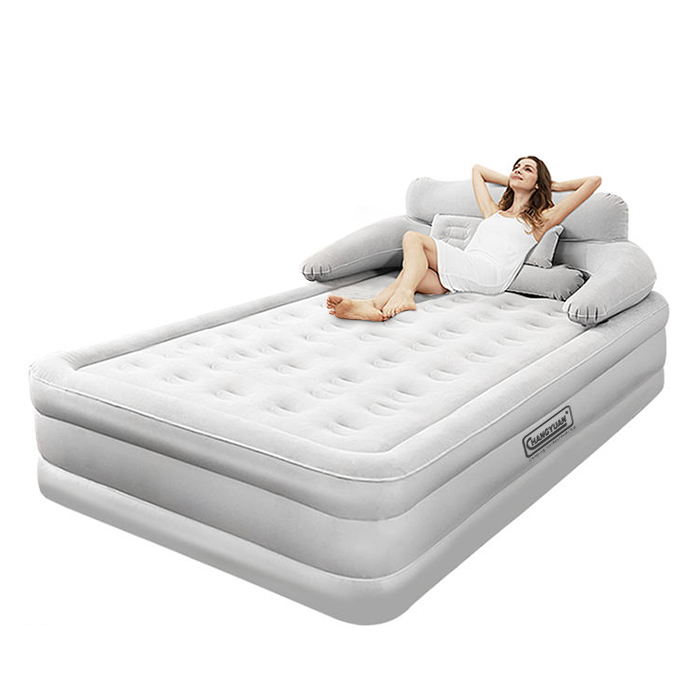What is the difference between an airbed and an air mattress?
In the realm of sleep solutions, airbeds and air mattresses stand as versatile alternatives to traditional beds. While they share similarities in their inflatable nature, the nuances between the two can significantly impact comfort, durability, and overall performance. Let's delve into the depths of these distinctions to unveil which option aligns best with your needs.

Defining Airbeds and Air Mattresses
Airbeds: A Versatile Sleep Solution
Airbeds also known as inflatable beds, typically feature a multi-layered design comprising PVC or vinyl materials. These beds often mimic the structure of traditional mattresses, incorporating distinct layers for enhanced support, comfort, and stability. Some premium airbeds even boast built-in pumps for effortless inflation and deflation, catering to personalized firmness preferences with adjustable settings.
Air Mattresses: Portable Comfort on Demand
In contrast, air mattresses prioritize portability and convenience, making them ideal for camping trips, temporary accommodations, or unexpected guests. These mattresses typically consist of single-layered PVC or vinyl construction, emphasizing lightweight design and compact storage. While lacking the intricate layering of airbeds, air mattresses still offer adequate support and cushioning for short-term use.
Key Differences: Airbed vs. Air Mattress
Construction and Durability
Airbeds excel in durability and long-term use, thanks to their multi-layered construction and reinforced seams. The incorporation of advanced materials enhances resistance to punctures, leaks, and wear over time, ensuring a reliable sleep surface with extended lifespan. Conversely, air mattresses, while resilient in their own right, may exhibit decreased durability due to their single-layered design and lightweight build.
Comfort and Support
When it comes to comfort and support, airbeds reign supreme with their customizable firmness settings and layered construction. Users can fine-tune inflation levels to achieve their preferred level of support, whether it's a plush, medium, or firm feel. Additionally, the presence of comfort layers, such as foam or fiber padding, enhances overall comfort, minimizing pressure points and promoting restorative sleep. While air mattresses offer decent comfort for short-term use, they may lack the tailored support and plushness of airbeds, particularly for individuals with specific sleep preferences or orthopedic needs.
Versatility and Application
Both airbeds and air mattresses boast versatility in their respective applications, catering to a wide range of scenarios and environments. Airbeds shine as primary sleep surfaces in bedrooms, guest rooms, or master suites, offering comparable comfort and support to traditional mattresses. Their adjustable firmness settings make them suitable for couples with differing sleep preferences or individuals seeking customizable comfort. On the other hand, air mattresses excel in portability, making them indispensable for camping adventures, outdoor activities, or temporary accommodations. Their compact size and lightweight design facilitate easy transportation and storage, ensuring comfort on the go.
Conclusion
In the debate between airbeds and air mattresses, the choice ultimately boils down to individual preferences, priorities, and intended usage. While airbeds prioritize comfort, durability, and customizable support, air mattresses offer unparalleled portability and convenience for transient sleep needs. By understanding the distinctions between these inflatable sleep solutions, you can make an informed decision that aligns with your lifestyle and preferences, ensuring restful nights and rejuvenated mornings.

Comments
0